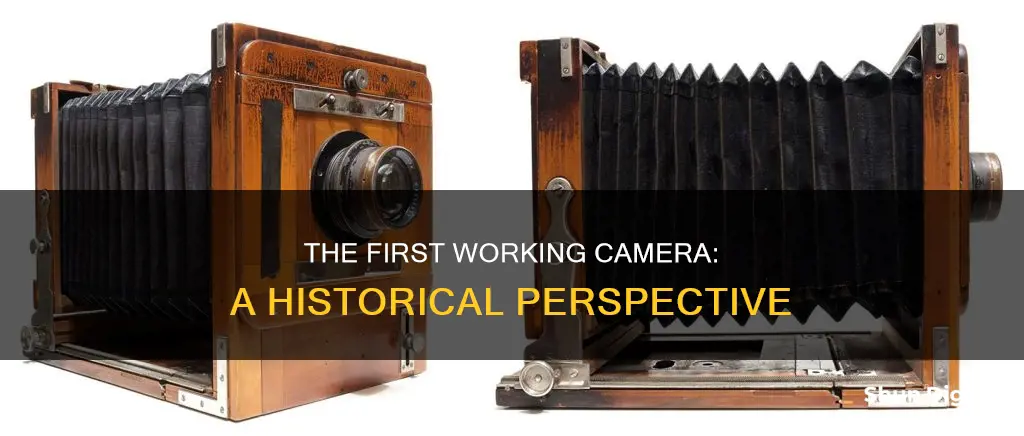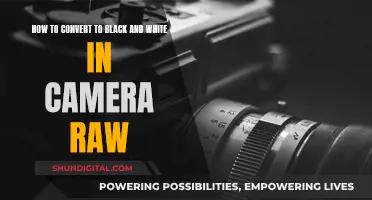
The history of the camera is a long and fascinating one, spanning centuries and involving numerous inventors and pioneers. The first camera, or more accurately, the precursor to the modern camera, is believed to have been invented around the 4th century BCE. This ancient device, known as the camera obscura, was a dark room or box with a small opening that projected an inverted image of the outside world onto its walls. While it did not create images, it played a crucial role in developing visual imaging techniques and laid the foundation for understanding optics and light.
Over the centuries, various inventors experimented with the camera obscura and made significant advancements. In the 16th century, the addition of rudimentary lenses improved image sharpness, and by the 17th century, portable versions of the camera obscura became commonplace. During this time, artists and scientists used this invention for painting and scientific research.
In the early 19th century, Joseph Nicephore Niepce made a transformative breakthrough by using a camera obscura to capture the world's first photographs. His images, created in 1816, were made using silver chloride-coated paper, with the regions not exposed to light becoming dark. However, these photographs were not permanent.
It was not until 1826 or 1827 that Niepce successfully created the first permanent photograph using a camera obscura and a light-sensitive chemical mixture. This image, captured on a pewter plate coated with bitumen, took several days of exposure and is now recognised as the oldest surviving photograph.
While Niepce is credited with creating the first permanent photograph, it is important to mention Louis Daguerre, who collaborated with Niepce and further refined the photographic process. Daguerre invented the daguerreotype, a process that used iodized silver plates exposed to light and developed with mercury fumes, resulting in sharper images with shorter exposure times. The daguerreotype became the first commercially successful photographic process and played a pivotal role in the popularisation of photography.
The history of the camera continued to evolve, with the introduction of roll film, digital cameras, and camera phones, bringing us to the high-quality, portable devices we know today.
| Characteristics | Values |
|---|---|
| Date of Invention | 1816 |
| Inventor | Joseph Nicephore Niepce |
| Image Type | Negative |
| Image Permanence | Non-permanent |
| Image Material | Silver chloride-coated paper |
What You'll Learn
- The first camera ever was invented in 1816 by French inventor Nicephore Niepce
- The first permanent photograph was taken in 1826 by Joseph Nicephore Niepce
- The first photographic camera was developed in 1816 by Joseph Nicephore Niepce
- The first mass-marketed camera was produced in 1839 by Alphonse Giroux
- The first camera phone was made in 1999 by Kyocera

The first camera ever was invented in 1816 by French inventor Nicephore Niepce
Niepce's first invention was the Pyréolophore, one of the world's first internal combustion engines, which he conceived and created with his older brother Claude Niepce. They patented the Pyréolophore in 1807.
Niepce's interest in photography grew out of his fascination with light and early lithographs using the "camera obscura" technique. He knew from the works of Carl Wilhelm Scheele and Johann Heinrich Schulze that silver salts would darken when exposed to light. However, he could not figure out how to make these changes permanent.
In 1816, Niepce conducted his first photographic experiments, using a camera of his own making and a piece of paper coated with silver chloride, which would produce a negative of the image (dark where it should be light). Because of how silver chloride works, these images were not permanent. However, Niepce continued to experiment with other substances, eventually turning to a "film" made from "Bitumen of Judea" (also known as "Asphalt of Syria"), a semi-solid form of oil that appears like tar. Mixed with pewter, it was the perfect material for Niepce to create permanent images.
In 1822, Niepce used this process to create what is believed to be the world's first permanent photographic image, a copy of an engraving of Pope Pius VII. Unfortunately, this image was later destroyed when Niepce attempted to make prints from it. The earliest surviving photographic artifacts by Niepce, made in 1825, are copies of a 17th-century engraving of a man with a horse and what may be an etching or engraving of a woman with a spinning wheel.
In 1826 or 1827, Niepce adapted the camera obscura to generate a permanent image on a photographic plate. He called this process "heliography" or "sun writing." The oldest surviving photograph produced with the aid of the camera obscura, now known as the "Niépce Heliograph," was taken by Niepce in 1827.
Niepce died in 1833, but his work laid the foundation for the future of photography. His partner, Louis Daguerre, continued his work and eventually produced the first mass-produced camera.
Unveiling the Highest-Resolution Camera: Unmatched Clarity and Detail
You may want to see also

The first permanent photograph was taken in 1826 by Joseph Nicephore Niepce
Niepce called his process "heliography", from the Greek "helios", meaning "drawing with the sun". Niepce's pioneering work in photography was soon overshadowed by the invention of the daguerreotype, and his death in 1833.
The first camera obscura, the precursor of the photographic camera, is a natural optical phenomenon named after its Latin translation, "dark room". It projects an inverted image of a scene from the other side of a screen or wall through a small aperture onto a surface opposite the opening. The earliest documented explanation of this principle comes from Han Chinese philosopher Mozi (c. 470–391 BC), who correctly argued that the inversion of the camera obscura image is a result of light travelling in straight lines from its source.
By the late 17th century, portable camera obscura devices in tents and boxes had come into use as drawing tools. However, the images produced by these early cameras could only be preserved by manually tracing them, as no photographic processes had yet been invented. Over time, cameras evolved from these large, cumbersome devices into increasingly compact models. By the time of Niepce, portable box camera obscurae suitable for photography were widely available.
The first photographic camera developed for commercial manufacture was a daguerreotype camera produced by Alphonse Giroux in 1839. The daguerreotype was extremely popular, and the French government purchased the rights to the design in exchange for a life pension for its inventor, Louis Daguerre, and his son.
Privacy Mode: ADT Camera's Secret Superpower Explained
You may want to see also

The first photographic camera was developed in 1816 by Joseph Nicephore Niepce
Niepce's early experiments involved using paper coated with silver chloride, which would produce a negative of the image (dark where it should be light). However, due to the nature of silver chloride, these images were not permanent. Niepce then experimented with a range of other light-sensitive materials, including "Bitumen of Judea" (also known as "Asphalt of Syria"), a semi-solid form of oil that appears like tar.
In 1826, Niepce successfully used his heliography process to capture the first photograph. He placed a polished pewter plate coated with bitumen of Judea inside a camera obscura and exposed it to light for around eight hours. After exposure, the plate was washed in lavender oil and turpentine, removing the soft unexposed bitumen and leaving a permanent image created by light. This image, a view from the window of his house in Chalons-sur-Saône, is the oldest surviving photograph and is now preserved at the University of Texas at Austin.
Niepce's invention of the first photographic camera was the culmination of centuries of contributions to the development of the camera. The camera obscura, meaning "dark room" in Latin, was the first camera ever created, dating back to ancient times. This device consisted of a small, dark room with light entering only through a small hole, projecting an inverted image of the outside scene onto the adjacent wall. Over time, camera obscura devices became more portable, and by the time of Niepce, portable box camera obscurae suitable for photography were widely available.
Niepce's work laid the foundation for further advancements in camera technology, with Louis Daguerre continuing his experiments after Niepce's death in 1833. Daguerre's invention of the daguerreotype in 1839 marked a significant milestone in the history of photography, leading to the first mass-marketed camera.
Understanding AF Mode Control on Your Camera
You may want to see also

The first mass-marketed camera was produced in 1839 by Alphonse Giroux
The history of the camera is a fascinating journey of world-changing discoveries and inventions. The first camera to take a permanent photograph was invented in 1826, almost a century before the portable camera was available to the middle class. The first mass-marketed camera was produced in 1839 by Alphonse Giroux.
Giroux was a French art restorer and ébéniste. He founded an art restoration business at the end of the 18th century and was the official restorer of Notre Dame Cathedral. He was also the brother-in-law of Louis Daguerre, a pioneer in the history of photography.
Giroux's camera was a daguerreotype camera, the first commercially manufactured photographic camera in the world. It was a mass-produced cabinet with a double-box design, costing 400 francs (approximately $7,000 by today's standards). The camera had a landscape lens fitted to the outer box, with a holder for a ground glass focusing screen and an image plate on the inner box. The inner box could be slid to bring objects at various distances into focus. The daguerreotype camera required long exposure times, ranging from 5 to 30 minutes.
The daguerreotype camera was exhibited at the 1839 Exposition des produits de l'industrie française in Paris, marking a significant milestone in the history of photography. This camera played a pivotal role in making photography accessible to the masses, paving the way for future innovations that transformed the way we capture and preserve memories.
Defringing in Camera Raw: A Step-by-Step Guide
You may want to see also

The first camera phone was made in 1999 by Kyocera
The history of the camera is a long and fascinating one, with the first camera invented in 1816 by French inventor Nicephore Niepce. However, the first camera phone was not introduced until 1999 by Kyocera.
The Kyocera VP-210, also known as the Visual Phone, was the first camera phone sold to the general public. Released in Japan in May 1999, it retailed for 40,000 yen (around $325 or £265 at the time). The phone featured a 0.11MP camera and could store up to 20 photos. While it was a highly innovative device, it did not succeed in the market due to its high price and considerable size.
The VP-210 was marketed as a mobile videophone, and its camera could only send up to two images per second over Japan's Personal Handy-phone System (PHS) cellular network. However, it could also store JPEG photos and share them via email. The phone even had an integrated stand for taking selfies!
The development of the camera phone was a significant milestone in the history of worldwide communication. It was the result of years of experiments and prototypes created by companies such as Intellect and Apple. While Kyocera was not the first to experiment with the idea of a camera phone, they were the first to successfully bring one to market.
The introduction of the camera phone marked the beginning of the end for small digital standalone cameras. In 2003, just four years after the VP-210 was released, camera phone sales were already higher than standalone digital camera sales. By 2006, camera phones had surpassed sales of both digital and film cameras.
Today, smartphones have become essential devices for capturing and sharing images and videos. They have also driven much of the growth in mobile data traffic, especially with the creation of photo and video-sharing and social media apps. The first camera phone from Kyocera played a pivotal role in kickstarting this revolution.
AI Camera Mode: Transforming Photography with Intelligence
You may want to see also







